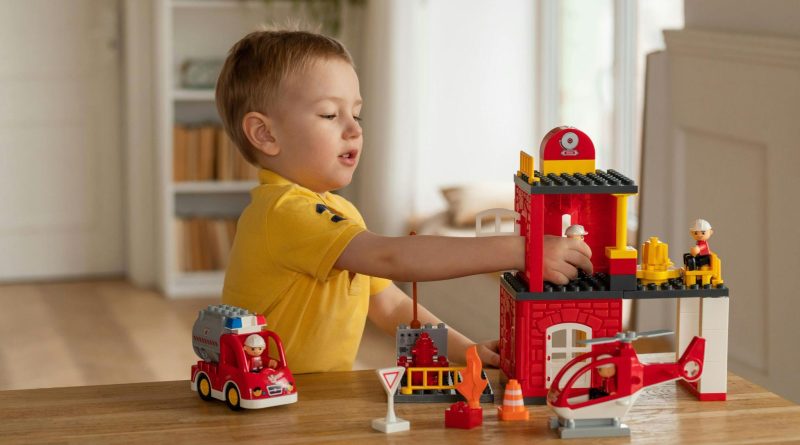Can You Make Money Collecting Rare LEGO Sets?
The short answer is yes — collecting rare LEGO sets can be profitable, and for some investors, remarkably so. What began as colorful plastic bricks for children has transformed into a legitimate alternative investment asset, with certain retired sets appreciating faster than gold, art, or even stocks. The key drivers behind this phenomenon are scarcity, retirement cycles, and passionate fan communities willing to pay premium prices for discontinued themes. This guide explores what makes LEGO sets valuable, how to invest strategically, the inherent risks, and proven methods for buying and selling at a profit.
Why Rare LEGO Sets Can Be Profitable
LEGO operates on a unique production and retirement model that creates artificial scarcity. Unlike most toys that remain in production indefinitely, LEGO regularly discontinues sets, removing them from retail shelves forever. This planned obsolescence, combined with enduring demand from collectors and enthusiasts, creates the perfect economic conditions for appreciation.
The Role of Retirement and Production Limits
When LEGO retires a set, its availability immediately shifts from mass retail to secondary markets where prices are determined by supply and demand. Historical data shows that retired sets appreciate at an average rate of 11% annually, with top-performing sets achieving 15-30% growth per year. This outpaces many traditional investment vehicles.
| Set Status | Average Annual Appreciation | Top Performers |
|---|---|---|
| Active Production | 0% (retail price) | N/A |
| Recently Retired (0-2 years) | 5-8% | 10-15% |
| Retired 3-5 years | 11-15% | 20-30% |
| Retired 5+ years | 12-18% | 30%+ |
The most significant price jumps typically occur 3-5 years post-retirement, when sealed inventory becomes genuinely scarce but demand remains strong.
Influence of Popular Themes and Licensed Franchises
Not all LEGO themes are appreciated equally. Sets tied to licensed franchises with multigenerational appeal consistently outperform generic themes. The most lucrative categories include:
- Star Wars — Particularly Ultimate Collector Series (UCS) models with massive piece counts and iconic vehicles
- Harry Potter — Limited production runs and nostalgic adult fans drive prices upward
- Modular Buildings — The Creator Expert modular building series has shown exceptional consistency
- Super Heroes — Marvel and DC sets with exclusive minifigures command premiums
- Architecture — Landmark buildings appeal to adult collectors and design enthusiasts
These themes succeed because they combine passionate fan bases, limited production windows, and licensing agreements that prevent indefinite reproduction.
Ultra-Rare and Exclusive Sets
The stratosphere of LEGO investing belongs to exclusive and limited-edition releases never sold through standard retail channels. Convention exclusives, employee gifts, and promotional items often multiply in value by 10-50 times their original price.
The Chrome Gold C-3PO minifigure, given to attendees at a 2007 event, now sells for $3,000-$5,000. The Inside Tour exclusive sets, available only to participants of LEGO factory tours, routinely fetch $2,000-$10,000. The 2012 SDCC Spider-Man minifigure has appreciated from its giveaway status to $400+ on secondary markets.
How to Identify High-Value LEGO Sets
Successful LEGO investing requires recognizing investment potential before prices skyrocket. Several key indicators help identify future winners.
Key Metrics: Rarity, Piece Count, and Minifigs
Professional LEGO investors evaluate sets using specific criteria:
Investment Checklist:
- Low production volume — Sets produced for less than 2 years or in limited quantities
- High piece count — Generally 2,000+ pieces for Creator/UCS sets; 1,000+ for licensed themes
- Exclusive minifigures — Unique characters or variants not available in other sets
- Licensed IP — Themes tied to enduring franchises rather than original LEGO themes
- Adult target market — 18+ designated sets typically appreciate better than children’s lines
- Complex builds — Intricate models appeal more to serious collectors
- Strong online buzz — Active discussion in forums and social media indicates demand
The sweet spot combines large piece counts, exclusive characters, and limited availability within popular themes.
Tools and Resources for Tracking Value
Data-driven investors leverage specialized platforms to monitor LEGO market trends. BrickEconomy provides comprehensive price tracking, appreciation rates, and retirement predictions. Brickset offers detailed set information and production timelines. BrickLink shows real-time secondary market prices through actual sales data.
Serious investors track retirement announcements, auction results from major collectibles houses, and eBay sold listings to gauge true market value rather than asking prices. Joining LEGO investment communities on Reddit (r/legoInvesting) and specialized forums provides crowd-sourced intelligence on emerging opportunities.
Timing Purchases: When to Buy vs. Hold
Strategic timing dramatically impacts returns. The optimal purchase window occurs 6-12 months before expected retirement, when retailers discount aging inventory but scarcity hasn’t yet driven prices up. Many investors purchase during Black Friday or end-of-year sales, securing 20-40% discounts on sets nearing retirement.
The recommended holding period is 3-5 years post-retirement for mainstream sets, allowing scarcity to develop while demand remains strong. Ultra-exclusive sets may appreciate immediately, while oversaturated themes might require 7-10 years. Patience is essential — the LEGO secondary market rewards long-term holders more than flippers.
Risks and Challenges of LEGO Investing

Despite impressive historical returns, LEGO investing carries significant risks that can erode profits or cause losses.
Market Saturation & Overhyped Themes
Not every retired set appreciates. Some themes experience stagnant demand or even price declines. Red flags include:
- Overproduction — Sets that remain widely available years after retirement indicate excessive inventory
- Frequent reissues — LEGO occasionally re-releases popular sets, tanking original versions’ value
- Low collector interest — Themes without passionate adult fan bases struggle in secondary markets
- Market saturation — Too many investors targeting the same sets can suppress appreciation
- Declining franchise popularity — Sets tied to fading media properties lose value
The 2015-2017 Dimensions theme, despite retirement, has shown minimal appreciation due to low collector demand and technology obsolescence.
Condition Matters: Why Sealed Sets Are Worth More
Factory-sealed, mint-condition sets command premiums of 50-200% over opened or built versions. Even minor box damage can reduce value by 10-30%. Collectors prize original packaging, intact seals, and unblemished boxes as proof of authenticity and completeness.
This creates a fundamental tension: the joy of building versus investment potential. Most serious investors never open their sets, treating them purely as financial assets. Those who build sacrifice significant appreciation.
Costs of Storage, Insurance, and Liquidity
Practical costs eat into profits. Climate-controlled storage prevents box warping and color fading. Insurance becomes necessary for valuable collections. LEGO sets are illiquid — finding buyers at optimal prices takes time, and selling quickly often means accepting discounts.
Platforms like eBay offer broad buyer reach but charge 12-15% fees. BrickLink caters to dedicated collectors with lower fees but slower sales. Private sales through Facebook groups or forums avoid fees but require more effort and risk.
Real-World Examples: Profitable LEGO Investments
Concrete case studies demonstrate the profit potential when strategy aligns with market dynamics.
High-Appreciation Sets: Star Wars UCS & Modular Buildings
| Set Name | Set Number | Original Retail | Current Value | Appreciation |
|---|---|---|---|---|
| UCS Millennium Falcon | 10179 | $500 (2007) | $5,000-$8,000 | 900-1,500% |
| Café Corner (Modular) | 10182 | $150 (2007) | $2,500-$3,500 | 1,500-2,200% |
| UCS Imperial Star Destroyer | 10030 | $270 (2002) | $3,000-$4,500 | 1,000-1,500% |
| Green Grocer (Modular) | 10185 | $150 (2008) | $1,800-$2,400 | 1,100-1,500% |
These flagship sets combined desirable themes, large piece counts, limited production runs, and strong nostalgic appeal to achieve extraordinary returns.
Ultra-Exclusive and Rare Gains
The 2011 Inside Tour T-Rex, given exclusively to factory tour participants, originally valued around $300-400, now sells for $8,000-$12,000. The Exclusive Chrome Stormtrooper minifigure reached $3,500 from its promotional origins. These astronomical gains stem from extreme scarcity — only dozens or hundreds exist worldwide.
How to Buy, Hold, and Sell for Profit

Transforming LEGO knowledge into actual profits requires systematic execution across the investment lifecycle.
Where to Buy Rare LEGO Sets
Primary sources include LEGO.com official shop, major retailers (Target, Amazon, Walmart), and LEGO Brand Stores during sales. Secondary sources include BrickLink, eBay, Mercari, and Facebook Marketplace for retired sets. Estate sales and local classifieds occasionally yield underpriced gems from sellers unaware of values.
Successful investors identify undervalued sets before the broader market recognizes their potential, purchasing below market rates through careful searching and patience.
How to Store and Preserve Value
Proper storage protects your investment:
- Store in climate-controlled environments (60-75°F, 40-50% humidity)
- Keep boxes away from sunlight to prevent fading
- Never stack heavy items on boxes
- Maintain original seals — never open even to inspect
- Document condition with photographs before storage
- Use shelving units rather than floor storage
- Consider plastic protective covers for extremely valuable sets
- Catalog inventory with set numbers and purchase dates
Selling Strategies: Timing and Platforms
eBay works best for high-value sets ($300+) with global buyer reach despite high fees. BrickLink suits bulk sellers and specialty collectors. StockX and eBay auctions can drive competitive bidding for rare items.
Pricing strategy requires researching recently sold comparables, not aspirational asking prices. Setting reasonable reserves in auctions protects against lowball sales while encouraging competitive bidding. Fixed-price listings with “or best offer” options balance getting fair value with selling efficiency.
Alternative Strategies: Parting Out vs Holding Whole Sets
Some investors maximize returns by disassembling sets and selling components individually.
Selling Individual Pieces or Minifigs
Valuable minifigures often exceed the entire set’s value. A rare Star Wars character might sell for $50-200 alone, while special elements like chrome pieces or printed tiles command premiums. Parting out a $300 set could yield $400-600 in piece sales, though at significant labor cost.
Pros: Higher total revenue, faster sales of individual components, access to piece-collector market Cons: Destroys sealed premium, time-intensive sorting/listing, shipping complexity, lost box value
Risks of Disassembly
Opening sets permanently eliminates the sealed premium. Original packaging often represents 30-50% of total value. The labor of cataloging, photographing, and listing hundreds of pieces can take 10-20+ hours per set.
Decision framework: Part out only if individual components demonstrably exceed sealed value by 50%+ and you have efficient systems for processing pieces.
Scaling LEGO as a Business or Side-Hustle
Serious investors treat LEGO collecting as portfolio management rather than hobby accumulation.
Building a Portfolio Approach
Diversification across themes reduces risk. A sample allocation might include:
- 60% Star Wars UCS — Proven appreciation leaders
- 25% Modular Buildings — Consistent performers
- 10% Harry Potter/Licensed — High upside potential
- 5% Ultra-Exclusives — Lottery tickets with massive gain potential
This balances reliable growth with high-risk/high-reward opportunities while avoiding overconcentration.
Legal, Tax, and Ethical Considerations
In most jurisdictions, collectible sales constitute taxable income. Frequent sellers may be classified as operating a business, requiring proper licensing and tax reporting. The IRS treats collectibles as capital assets with specific tax rates.
Counterfeit LEGO from China floods secondary markets — authentication skills are essential. Ethically, some criticize investors for depriving fan access to limited sets, though market economics suggest this reflects genuine scarcity rather than artificial manipulation.
Conclusion
Making money collecting rare LEGO sets is not only possible but proven through decades of data. Success requires understanding which themes appreciate, timing purchases strategically, maintaining pristine condition, and holding through optimal appreciation cycles. The combination of retirement-driven scarcity, passionate collector demand, and cultural nostalgia creates sustainable value growth.
The most critical factors remain rarity, condition, and patience. Start by researching retirement calendars, tracking values on BrickEconomy, and targeting sets with strong fundamentals before prices spike. Treat LEGO collecting as both a rewarding passion and a legitimate alternative investment — with proper strategy, those colorful bricks can build real wealth.




